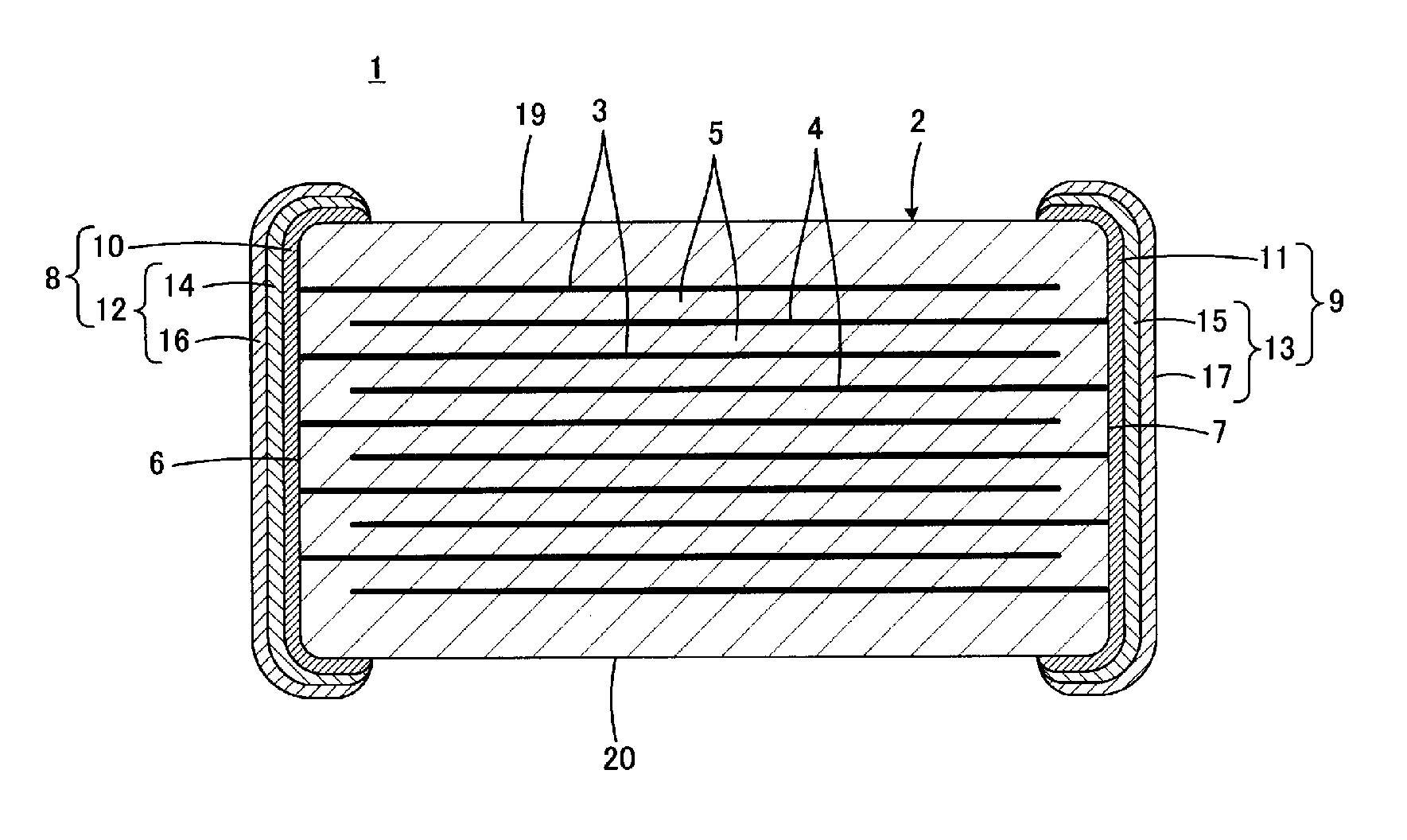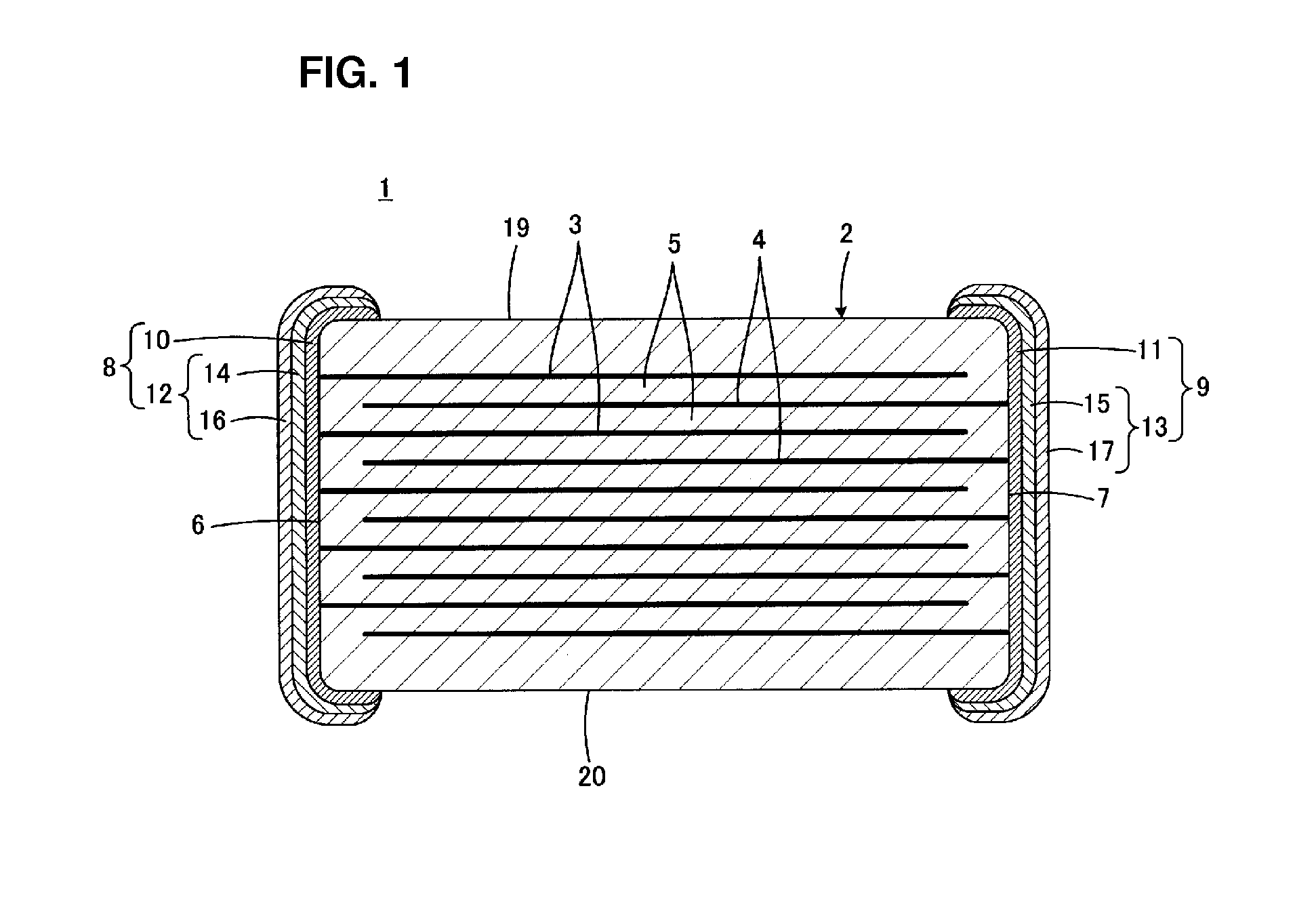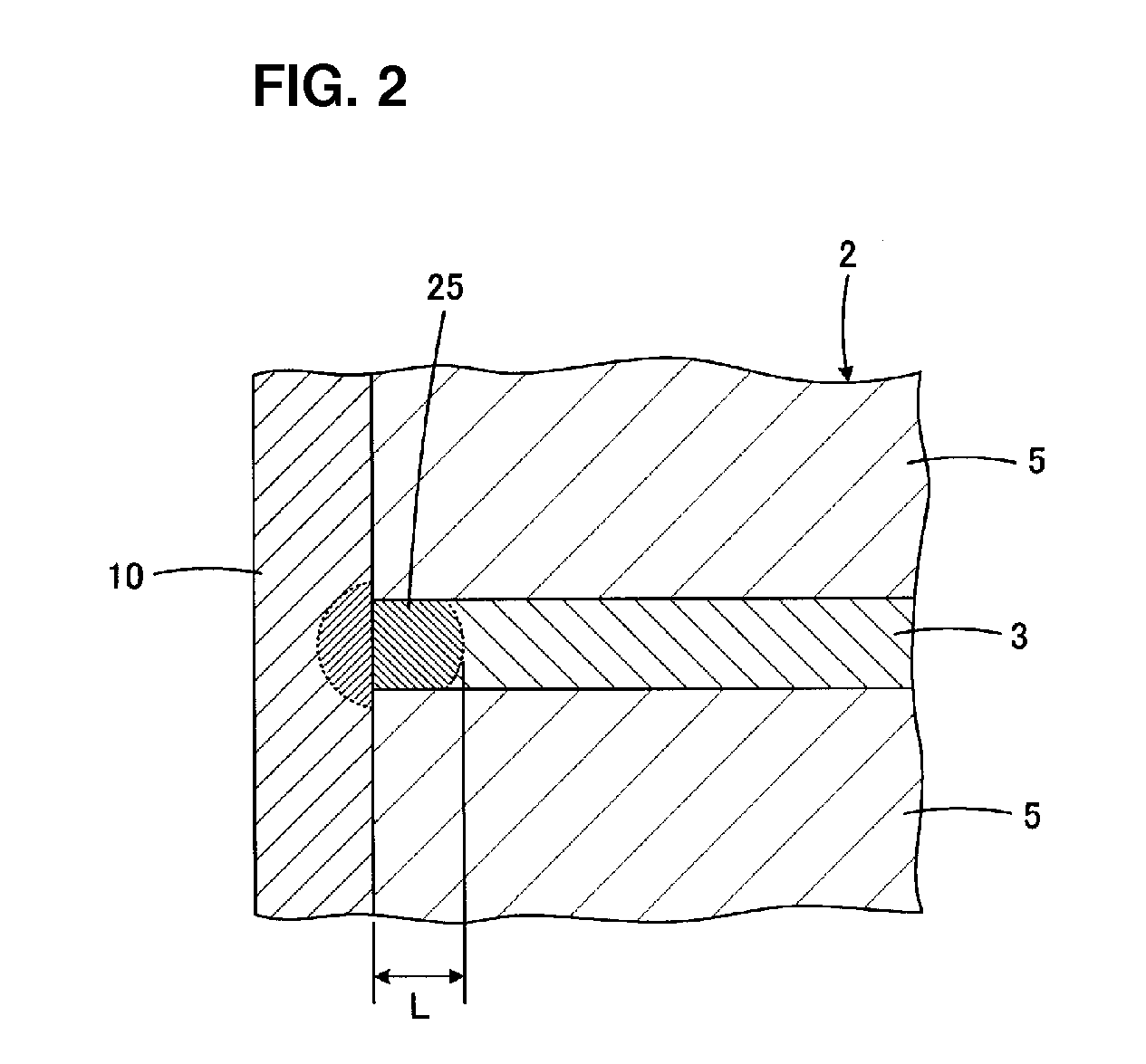Laminated ceramic electronic component and manufacturing method therefor
a technology of laminated ceramics and electronic components, applied in the direction of fixed capacitor details, stacked capacitors, fixed capacitors, etc., can solve the problems of structural defects, defects in reliability, and other moisture likely to enter the component main body along the interface between the internal electrodes and the ceramic layer
- Summary
- Abstract
- Description
- Claims
- Application Information
AI Technical Summary
Benefits of technology
Problems solved by technology
Method used
Image
Examples
Embodiment Construction
[0027]A laminated ceramic electronic component 1 according to a preferred embodiment of the present invention and a manufacturing method therefor will be described with reference to FIGS. 1 and 2.
[0028]A laminated ceramic electronic component 1 includes a component main body 2 having a laminated structure. The component main body 2 includes a plurality of internal electrodes 3 and 4 therein. More specifically, the component main body 2 includes a plurality of laminated ceramic layers 5, and a plurality of layered internal electrodes 3 and 4 arranged at interfaces between the adjacent ceramic layers 5. The internal electrodes 3 and 4 preferably primarily include nickel, for example.
[0029]When the laminated ceramic electronic component 1 is a laminated ceramic capacitor, the ceramic layers 5 are preferably made of a dielectric ceramic. It is to be noted that the laminated ceramic electronic component 1 may define a different element such as an inductor, a thermistor, or a piezoelectri...
PUM
| Property | Measurement | Unit |
|---|---|---|
| temperature | aaaaa | aaaaa |
| temperature | aaaaa | aaaaa |
| temperature | aaaaa | aaaaa |
Abstract
Description
Claims
Application Information
 Login to View More
Login to View More - R&D
- Intellectual Property
- Life Sciences
- Materials
- Tech Scout
- Unparalleled Data Quality
- Higher Quality Content
- 60% Fewer Hallucinations
Browse by: Latest US Patents, China's latest patents, Technical Efficacy Thesaurus, Application Domain, Technology Topic, Popular Technical Reports.
© 2025 PatSnap. All rights reserved.Legal|Privacy policy|Modern Slavery Act Transparency Statement|Sitemap|About US| Contact US: help@patsnap.com



